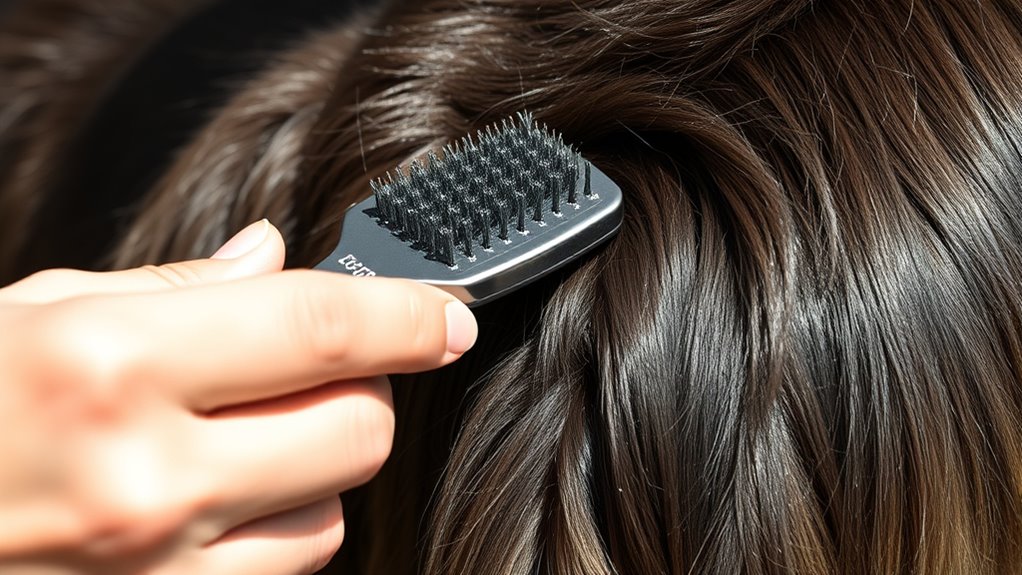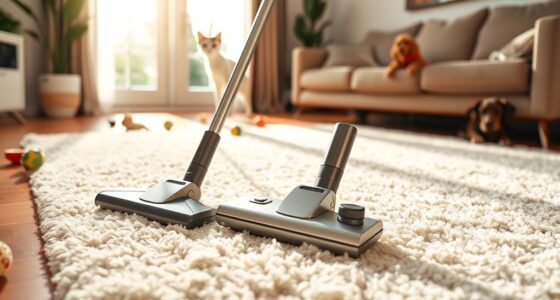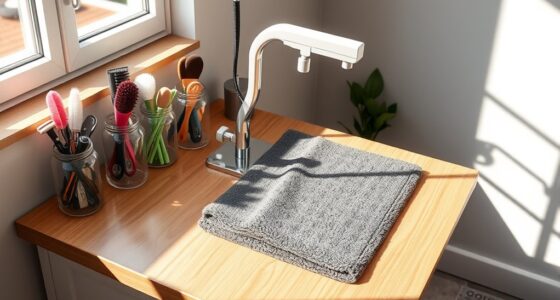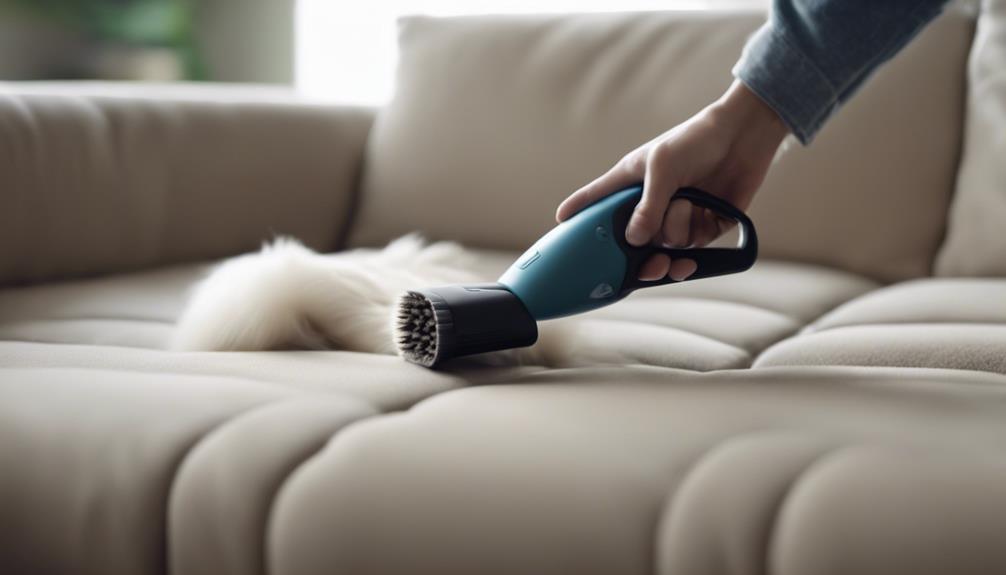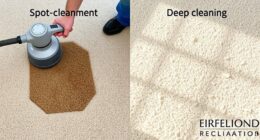To minimize shedding, brush your pet regularly using gentle, deliberate strokes that remove loose fur without causing discomfort. Focus on areas prone to shedding, like behind the ears and along the back, and use the right deshedding tools for their coat type. Keep the sessions consistent—daily for long-haired breeds and a few times a week for short-haired ones. Proper technique makes a difference; keep going to discover even more effective grooming tips.
Key Takeaways
- Use gentle, deliberate strokes to effectively remove loose fur without causing discomfort.
- Select appropriate deshedding tools designed for your pet’s coat type for optimal shedding control.
- Brush regularly based on breed, coat length, and age—daily for long-haired breeds, several times weekly for short-haired.
- Focus on high-shedding areas like behind ears, under chin, and along the back for better results.
- Incorporate bathing and trimming into your grooming routine to loosen shed fur and maintain coat health.
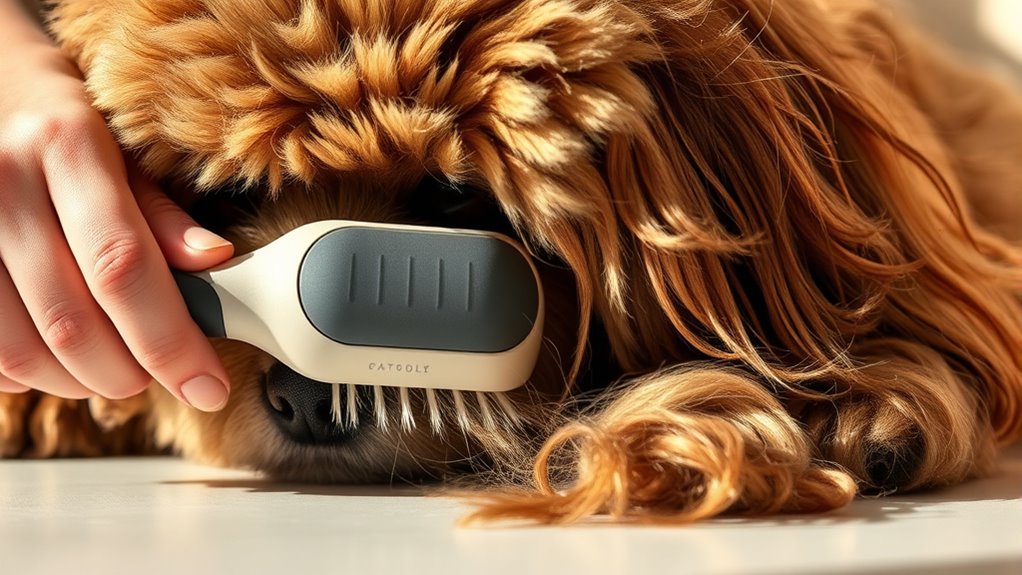
Regular brushing is one of the most effective ways to reduce shedding and keep your pet’s coat healthy. Consistent grooming not only minimizes loose fur around your home but also prevents mats and tangles, which can trap dirt and cause discomfort. To achieve the best results, you should establish a grooming schedule tailored to your pet’s breed and coat type. A well-planned routine ensures shedding is controlled without stressing your pet or damaging their coat.
Regular grooming tailored to your pet’s breed helps control shedding and maintain a healthy coat.
Using the right tools is essential, and deshedding tools are particularly useful for managing excess hair. These tools are designed to reach through dense coats and remove loose undercoat hair efficiently. When you incorporate deshedding tools into your grooming schedule, you can considerably reduce the amount of fur that ends up on your furniture or floors. Regular use prevents the buildup of loose fur, making shedding more manageable. They also help distribute natural oils throughout your pet’s coat, promoting a shiny, healthy appearance.
The frequency of brushing depends on your pet’s breed, age, and coat length. For example, long-haired breeds or double-coated dogs typically need to be brushed more often—sometimes daily—while short-haired breeds might only require brushing a couple of times a week. Establishing a consistent grooming schedule helps you stay on top of shedding and prevents the coat from becoming greasy or matted. It’s best to set aside a specific time each day or several days a week for grooming, so it becomes part of your routine.
When you start brushing, make sure to use gentle, deliberate strokes. This not only makes the process more comfortable for your pet but also ensures you’re effectively removing loose fur without causing irritation. Pay special attention to areas where shedding is most prevalent, such as behind the ears, under the chin, and along the back. Using deshedding tools correctly can reach those hard-to-access areas, giving you a thorough clean that reduces loose hair considerably. Additionally, understanding noise levels of modern heat pumps can help create a quieter environment during grooming sessions, reducing stress for your pet.
In addition to using deshedding tools, you can incorporate other grooming techniques like bathing and trimming into your schedule. Regular baths with appropriate pet shampoos can loosen shed fur and remove dirt, while trimming helps control excessive hair growth that contributes to shedding. By maintaining a consistent, all-encompassing grooming routine, you’ll not only minimize shedding but also improve your pet’s overall coat health and comfort.
Frequently Asked Questions
How Often Should I Replace My Pet’s Brushing Tools?
You should replace your pet’s brushing tools every three to four months to guarantee effective grooming. Incorporate this into your pet grooming schedules and follow brush maintenance tips, like cleaning and inspecting for wear. Regular replacement helps prevent bacteria buildup and keeps the brush working efficiently. If you notice the bristles are frayed or shedding excessively, replace it sooner. Maintaining your tools ensures your pet stays comfortable and healthy.
Are Specific Brush Types Better for Reducing Shedding?
Certain brush types are better for reducing shedding, especially those designed for your pet’s coat type. For example, slicker brushes work well for thick or curly fur, while bristle brushes suit short-haired pets. Using the right grooming tools can markedly cut down pet shedding by removing loose hair effectively. Choose your brush types wisely, and you’ll notice less shedding around your home and healthier skin for your pet.
Can Diet Influence My Pet’s Shedding and Coat Health?
Did you know that proper diet impacts your pet’s shedding and coat health? You can substantially reduce shedding by ensuring they get the right nutrients. Diet impact is vital, as coat nutrition provides essential fatty acids and vitamins that promote a shiny, healthy coat. When you feed your pet high-quality food, you support their skin health, minimize excess shedding, and keep their coat looking its best.
Is It Safe to Use Human Hairbrushes on Pets?
Yes, it’s safe to use human hairbrushes on pets if you choose the right type. Focus on pet-specific brushes or gentle options to guarantee proper pet hair hygiene and grooming safety. Avoid using harsh or metal brushes designed for humans, as they can hurt your pet’s skin. Always brush gently, and monitor your pet for any signs of discomfort to keep grooming safe and effective.
What Signs Indicate My Pet’s Shedding Is Excessive or Abnormal?
You’ll notice your pet’s shedding is excessive if you see unusual hair loss patterns or bald spots. Watch for signs of skin irritation, like redness, itching, or inflammation. If your pet’s shedding increases suddenly or seems uneven, and they scratch or bite at their skin, these are signs of abnormal shedding. Regularly check their coat and skin to catch issues early, ensuring they stay comfortable and healthy.
Conclusion
By brushing regularly, by choosing gentle tools, and by using proper techniques, you can markedly reduce shedding. Consistent brushing keeps your pet’s coat healthy, reduces loose hair, and prevents matting. Gentle strokes promote circulation, stimulate oil production, and enhance bond-building. When you stay committed to these habits, when you prioritize your pet’s grooming, and when you remain patient and gentle, you create a healthier, happier environment for both of you. Keep brushing, keep caring, and enjoy a shed-free home.
